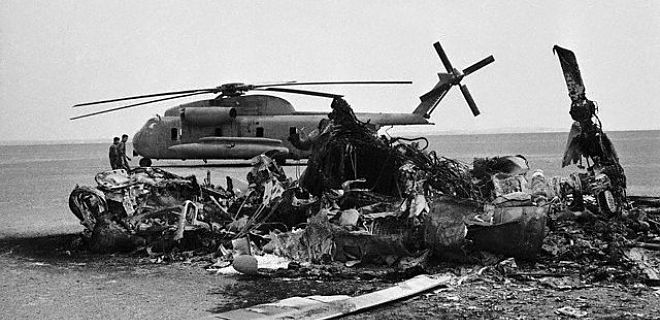As part of preparing for my talk at DevOpsDays Detroit, I did a significant amount of research into military failures. It was hard to find a military failure that did not evoke an emotional response or political discussion. But, I was prepared to talk about two: The 1961 Goldsboro B-52 Crash and the failed Iran hostage rescue, Operation Eagle Claw.
In the case of Operation Eagle Claw, you can draw a comparison to the old IT silo mentality of Dev and Ops being two different teams with very different objectives. The mission planners (Developers in this example) failed to consider a solid delivery process to production (deployment of operators into combat). The Developers assumed Operations would do things a certain way without much testing prior to deployment. The Operations team (special operations forces) demonstrated that the assumptions made by the Developers (mission planners) were not rooted in reality.
One helicopter had a hydraulic issue, another got lost in a dust storm, and a third had a cracked rotor and was subsequently scuttled. This is like three of eight services failing to launch in production. The mission (deployment) was aborted per the parameters agreed upon prior to deployment; that is when the real catastrophe occurred. As one of the operators guided a helicopter off the ground to return to base he shielded himself from the dust storm under the wing of a C-130 that was refueling the helicopters at a makeshift base in the Iranian desert. The helicopter pilot was in a very low visibility situation. He honed in on the only thing he could make out through the rotor created dust storm; the operator guiding him. The helicopter pilot could not assess that the operator had moved under the wing of the C-130. With no warning the helicopter’s rotors struck the C-130 and crashed into the cockpit of the C-130 that had just refueled the helicopter.
The chaos that ensued was tremendous. People were scurrying away from exploding aircraft and ammunition. Four operators were injured and another eight perished. The planned abort of a deployment had turned utterly catastrophic. The immediate order to fail faster than planned was given as remaining aircraft were loaded and took off as soon as they could. Luckily no additional accidents occurred during the hastened evacuation but the dead were left behind in the rush to escape the area. The aftermath of the failed operation was equally catastrophic. If the mission planners are viewed as the development team and the special operations forces played the role of operations team the President of the United States Jimmy Carter played the role of CEO. President Carter himself blamed his failed 1980 re-election bid, at least partially, on his handling of the Iran hostage crisis. President Carter’s board of directors (US voters) decided a change in direction was necessary. As part of the postmortem, actions were taken to prevent this kind of disaster from occurring again but the damage had been done.
Operation Eagle Claw is an astounding example of an overseas military operation going catastrophically wrong. It was an embarrassment to the nation and the special forces community. The loss of life was tragic and unneccessary. But, in every mistake there is an opportunity to learn. And in every failure there is an opportunity to prevent it from happening again.
